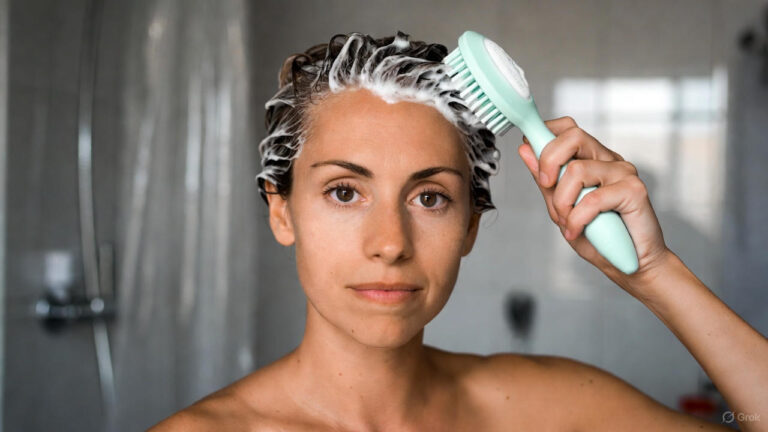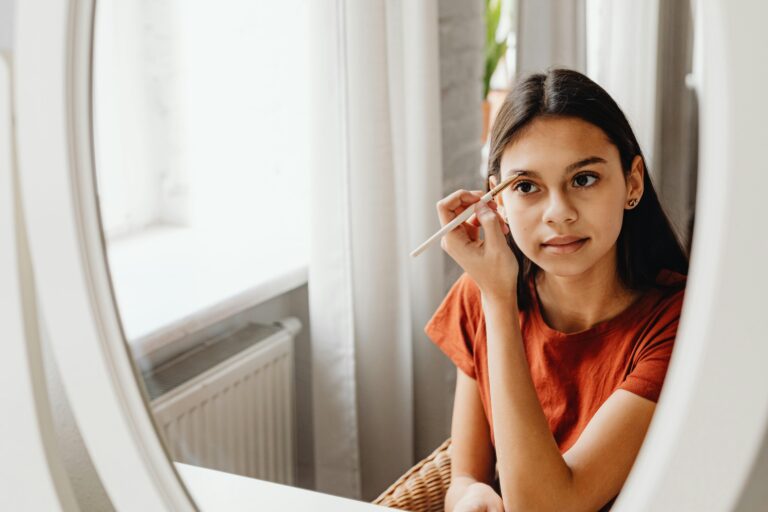How beauty standards differ around the world is a fascinating topic because it shows how deeply culture shapes what we find attractive. The things that signal beauty in one country may mean something entirely different somewhere else. When you travel or scroll through social media, you see it instantly.
A high nose bridge, pale skin, curvy hips, glossy hair, straight teeth, or even specific body marks can carry huge cultural weight. None of these traits are universally valued. They’re stories told by societies, passed down, reshaped, and sometimes challenged. Understanding them helps you see beauty as a rich, global conversation—not a single rulebook.
East Asia: Pale Skin and Youthful Features
In countries like Japan, South Korea, and China, pale, even-toned skin has long been prized. Historically, it showed you weren’t working outside. It meant wealth and class. Even today, many skincare products focus on “brightening” or “whitening.”
South Korea adds another layer: a preference for small, delicate facial features, like a V-shaped jawline and double eyelids. Plastic surgery is normalized there, with procedures like jaw contouring or eyelid adjustments done openly. Youthfulness is often tied to success, making smooth, fresh faces a cultural aspiration.
But there’s nuance. While trends lean toward symmetry and softness, individuality is growing. Younger generations embrace bolder looks—bright hair, unique piercings, or different makeup techniques. Beauty here mixes tradition with modern self-expression.
South Asia: Hair, Eyes, and Bridal Radiance
In India, Pakistan, Bangladesh, and Nepal, beauty has deep cultural roots tied to hair, eyes, and ceremonial preparation. Thick, shiny hair often symbolizes health and femininity. Kohl-lined eyes have been a staple for centuries, both for aesthetics and spiritual protection.
Skin tone has been a sensitive issue here, with fairness creams dominating markets for decades. Colonial histories and class associations influenced this. However, there’s a powerful movement now rejecting colorism and celebrating darker skin. Bollywood and social media stars play a big role in this shift.
Bridal beauty is a major cultural event. From intricate mehndi (henna) designs to layers of gold jewelry, wedding days showcase regional aesthetics with pride. Beauty here isn’t just about individual traits—it’s about cultural artistry.
The Middle East: Eyes, Fragrance, and Modesty
In countries across the Middle East, the eyes often take center stage. Dramatic eyeliner, long lashes, and defined brows are cultural signatures. They draw attention while maintaining modesty in line with religious and social norms.
Fragrance is equally vital. Historically, perfumes and oils signified wealth and refinement. Even today, a person’s scent is considered part of their presence.
Fashion intertwines with beauty, from abayas to embellished fabrics. Modesty doesn’t erase self-expression; it redirects it. Women experiment with textures, colors, and makeup in ways that respect cultural traditions while allowing individuality.
Africa: Body, Hair, and Tribal Identity
Africa’s beauty standards are incredibly diverse. Some regions celebrate fuller figures, seeing them as signs of health and prosperity. Others prize lean athletic frames.
Hair plays a huge role. Braiding, twisting, and sculpting styles carry meaning beyond aesthetics—they signal heritage, age, or marital status. From the Himba women’s red ochre-covered hair in Namibia to elaborate beadwork in Nigeria, beauty often communicates cultural identity.
Body modifications like scarification or piercings also hold traditional meaning. They mark milestones, honor ancestors, or show bravery. In a modern context, natural hair movements and bold fashion reclaim traditional pride while embracing global influence.
Europe: Minimalism, Elegance, and Trend Cycles
Europe’s beauty ideals shift by region. In France, effortless elegance reigns. People often prefer minimal makeup and natural hair textures, signaling confidence and chic simplicity.
Italy leans toward glamorous, bold styles—defined lips, glossy waves, and tailored fashion. Northern countries like Sweden or Denmark often embrace understated looks, focusing on skincare and natural beauty.
European standards also shape global fashion. High-fashion houses in Paris, Milan, and London set trends that ripple worldwide. Yet even here, diversity is challenging old norms. Representation of different body types, ethnicities, and ages grows every year.
North America: Diversity, Celebrity, and Innovation
In North America, especially the United States and Canada, beauty is a mash-up of cultures. The influence of Hollywood, music, and social media creates a constant churn of trends. One year it’s ultra-thin brows, the next it’s full, fluffy ones.
Body ideals have swung from thin to curvy to athletic and back again. Celebrity influence is massive. A single viral look can inspire millions to buy the same lipstick or try a new hairstyle.
Yet, there’s also an inclusivity movement here. More brands feature models with disabilities, skin conditions, or nontraditional features. People push back against perfection, celebrating freckles, natural curls, and age lines.
Latin America: Curves, Color, and Celebration
Countries like Brazil, Colombia, and Mexico often celebrate curvier figures. Fitness, dance, and vibrant fashion play into this. In Brazil, cosmetic surgery is common and socially accepted, reflecting a cultural comfort with body modification.
Bright colors, bold makeup, and dramatic hairstyles show pride and joy in self-presentation. Beauty often ties into celebration—festivals, parades, and cultural dances all showcase creative expression.
At the same time, natural beauty trends grow alongside glamour. Younger generations value authenticity plus self-confidence over strict adherence to any single look.
Oceania and Indigenous Communities: Nature, Tattoos, and Heritage
In places like Polynesia, tattoos (known as tatau) carry deep meaning. They’re not trends—they’re heritage. Each symbol tells a story of family, status, or personal journey.
In Australia, Aboriginal communities historically used body paint for ceremonies, signaling beauty, spirituality, and identity. Meanwhile, modern urban centers embrace both Western beauty trends and native pride.
These regions highlight how beauty isn’t always about appearance. It’s often about belonging, history, and respect for ancestors.
Globalization: Mixing, Blending, and Rewriting Beauty
Today, beauty standards differ around the world but influence each other constantly. Korean skincare inspires Europeans. African braids appear on runways in Paris. Latin dance aesthetics inspire fitness trends globally.
This cross-pollination creates both opportunity and tension. On one hand, it celebrates diversity. On the other, it risks cultural appropriation or unrealistic standards. The conversation now focuses on respect, representation, and agency.
Conclusion
How beauty standards differ around the world shows that beauty is never universal. It’s cultural, dynamic, and personal. The best part? You get to decide what it means for you, no matter where you’re from.
FAQs
1. Why do beauty standards differ around the world?
They differ because history, culture, religion, and environment shape what each society values.
2. Which country has the most unique beauty traditions?
Many countries do. Japan’s geisha traditions, Namibia’s ochre hair, and Polynesia’s tatau all stand out for cultural depth.
3. Has globalization made beauty standards more similar?
Yes, in some ways. Trends spread fast. But local pride and individuality also grow, keeping diversity alive.
4. How does media affect global beauty standards?
Media amplifies trends, sometimes creating pressure. But it also spreads awareness and encourages inclusive representation.
5. Can you define a universal beauty ideal?
Not really. Every culture tells its own story of beauty. What’s universal is the human desire to feel confident and valued.



